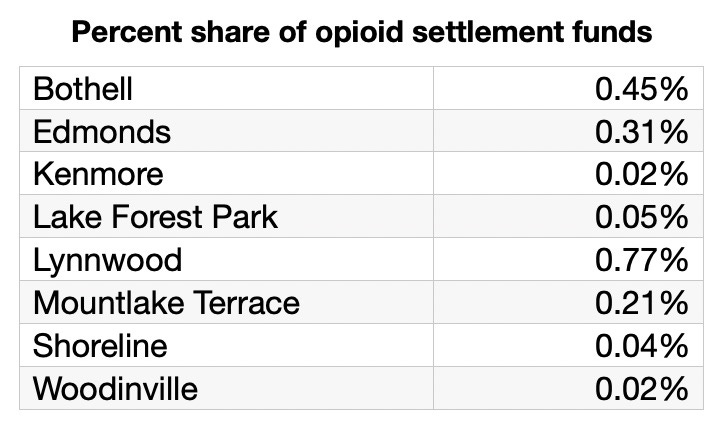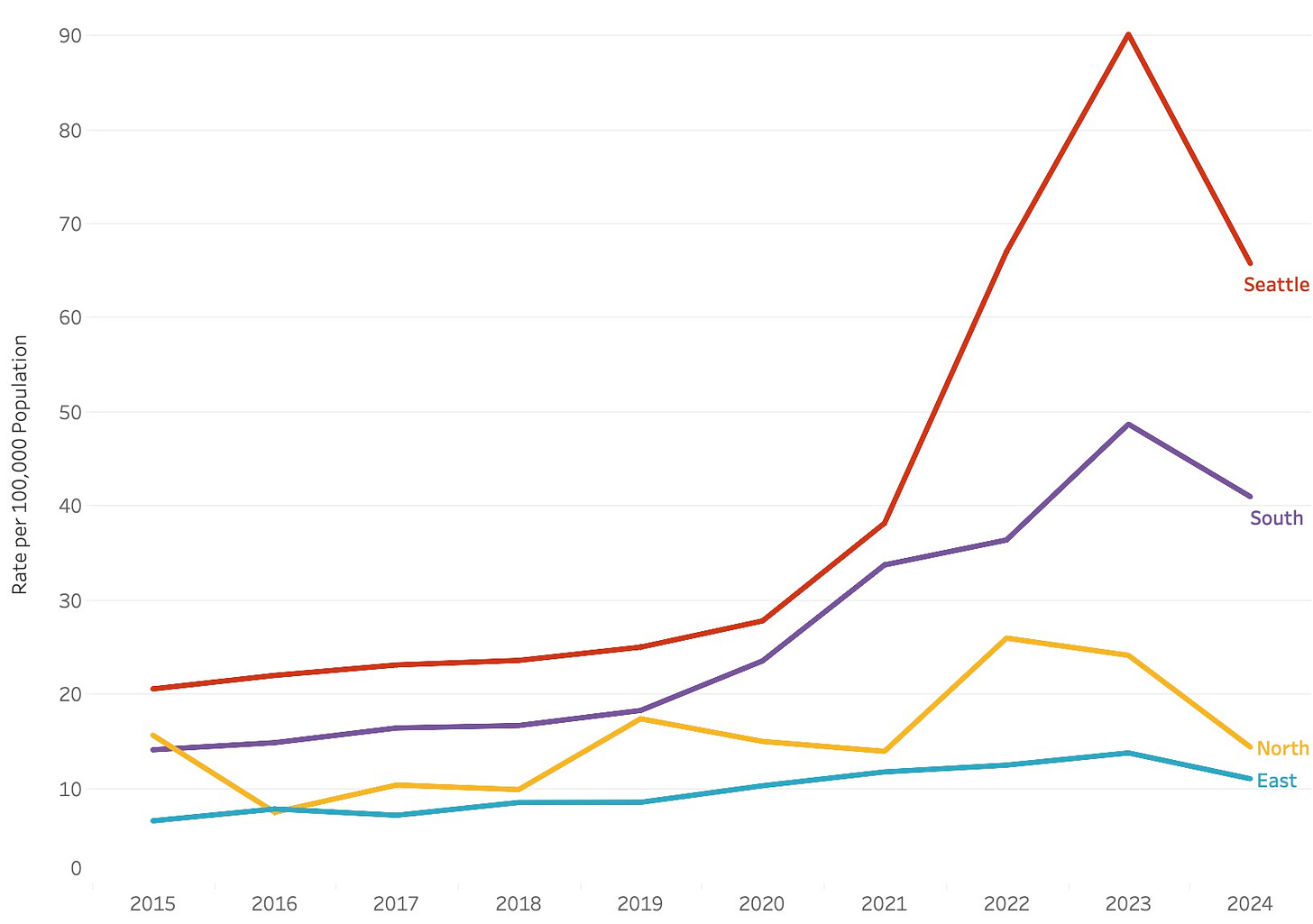Uneven Payouts, Unclear Plans; North King Opioid Funds
As Shoreline, Lake Forest Park, Bothell, and Lynnwood accept opioid epidemic payouts, how much each city receives and how the funds will be spent varies widely
Since 2019, annual opioid deaths in King County nearly tripled, reaching a peak of 854 in 2023. Although opioid deaths decreased slightly in 2024, State Representative Lauren Davis said the decline was most likely because the population of people “with severe opioid use disorder is essentially dying off.”
Most King County overdose deaths occurred in Seattle and South King County, with North and East King County having a much lower opioid death rate.

Local governments are getting money from lawsuits against companies accused of fueling the opioid epidemic. So far, Washington state expects to receive more than $1.1 billion in opioid settlement funds (with some estimates as high as $1.6 billion). Half the funds will go to the state, and the other half will be divided between cities and counties.

Some cities in the region will be receiving much more than others. Lynnwood could get almost $4.5 million, while Kenmore will only receive a little over $100,000, for example.
The opioid settlement funds must be spent on programs that address the opioid crisis, like addiction treatment, harm reduction, recovery, prevention, helping people in the criminal justice system, and data collection and research. Cities in King County must report how they spend funds to the Opioid Abatement Council (OAC).
The City of Bothell expects to receive over $3 million in opioid settlement funds over the next 17 years and has already received $679,874 as of May. Bothell says the funds will be spent to contract with service providers to connect members of the community with behavioral health services. Some funds will go to Bothell’s Police and Fire Departments to cover expenses related to the opioid epidemic. The city will get people accused of low-level crimes therapeutic services through pre-trial diversion and the city’s Community Court. And some funds will support education programs to reduce drug use on school and college campuses.
By far, Lynnwood will receive the largest portion of the funds in the North King and South Snohomish County region. Lynnwood will get about 0.77% of the local-government settlement funds, which could total nearly $4.5 million paid out over the next 17 years. The Lynnwood city council has recently debated how best to spend those funds. Edmonds will receive 0.31% of the local-government funds, and Mountlake Terrace will get about 0.21%.
The city of Lake Forest Park said they expect to receive about $304,097.89 over the next 15 years from the opioid settlements. So far, LFP has allocated $4,771 for the police department to provide Narcan and training to all city employees. LFP also budgeted $20,000 for a contract with Hopestream Community, a local non-profit that provides support services to parents whose children have substance use disorders.
The City of Shoreline will receive only 0.04% of the local-government funds and expects to receive about $252,239.22 over the lifetime of the opioid settlements, lasting up to 15 years. Shoreline has not publicly reported an itemized plan for how it will spend the funds but has told the city council, “The City is already administering the funds it has received from the prior settlements and will include these funds in that amount.”
The Kenmore City Council has approved participation in opioid settlement agreements. But Kenmore will only receive a 0.02% share of the local-government funds— likely amounting to a little more than $100,000 over the next 17 years. Woodinville also will only receive about a 0.02% share.


